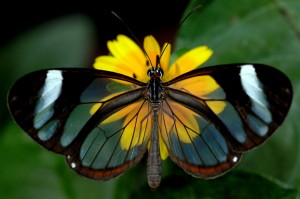Cities are unique ecosystems, entirely shaped by human activity. Even human demographic patterns can affect the abundance and distribution of species within the urban landscape. A recent study of lizards[1] in Phoenix, AZ demonstrated just how important this issue can be for biodiversity and for social inequality. The study, lead by Jeffery Ackley from Arizona State University, not only examined the effect of environmental variables, like the amount of space covered by buildings, but it also included household income. Results of the study showed that, although environmental factors played a key role in the diversity and abundance of lizards, the most diverse lizard communities were clearly found in the most affluent communities of people. This pattern is known as the “luxury effect”. The luxury effect was particularly strong for these lizards, but this is not the first time scientists have uncovered links between socio-economics and urban biodiversity.

The study of lizards in Phoenix was conducted in collaboration with the Central Arizona-Phoenix Long-term Ecological Research (CAP LTER) project. Scientists involved in this project are interested in integrating ecology with social sciences in order to better understand how we can create cities that benefit people and biodiversity. Previous research from the CAP LTER has shown luxury effects on both bird[2] and plant[3] species. The recent study on lizards was based on these earlier findings and reinforces the importance of taking an interdisciplinary approach to biodiversity conservation and urban greening. The LTER is an extensive network of projects across the country. Scientists at the Baltimore Ecosystem Study LTER (BES) are also looking at how human values and demographics are linked to nature in cities.
So, what do these luxury effects really mean? It’s not actually the presence of more money that attracts species to an area, but associated changes in the landscape, such as the presence of more parks and gardens, can definitely promote biodiversity. This means that people in less affluent communities may not have the same access to nature and vital green space, which contributes to human health, well-being, and education.

Studies from the CAP and BES LTER projects have shown us how inequality in our country can effect people and biodiversity alike and create a valuable framework for creating sustainable cities in an environmentally just way. Affluent communities are not the only ones who deserve access to biologically diverse green spaces. Local governments need to do a better job of ensuring environmental equality in their cities. This can only happen through active communication between scientists and the cities in which they work. Here’s how the CAP LTER and BES are setting an example for community outreach and a path to urban nature for everyone.
[1] Ackley, J., et al. “In press. Rich lizards: How affluence and land cover influence the diversity and abundance of desert reptiles persisting in an urban landscape.” Biological Conservation.
[2] Lerman, Susannah B., and Paige S. Warren. “The conservation value of residential yards: linking birds and people.” Ecological applications 21.4 (2011): 1327-1339.
[3] Hope, Diane, et al. “Socioeconomics drive urban plant diversity.” Proceedings of the national academy of sciences 100.15 (2003): 8788-8792.

